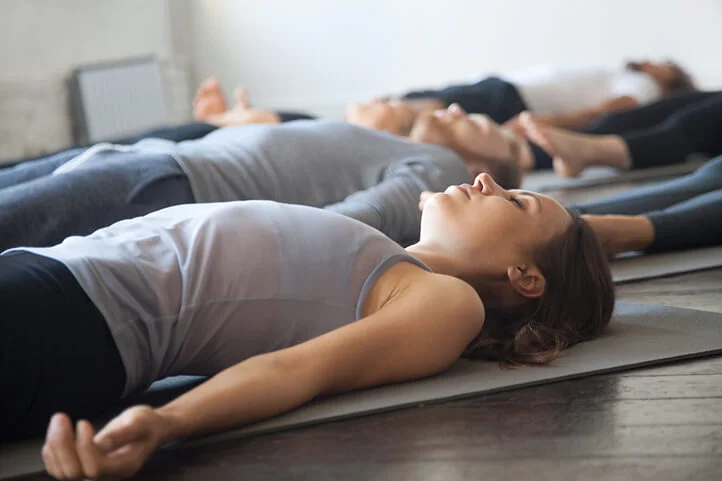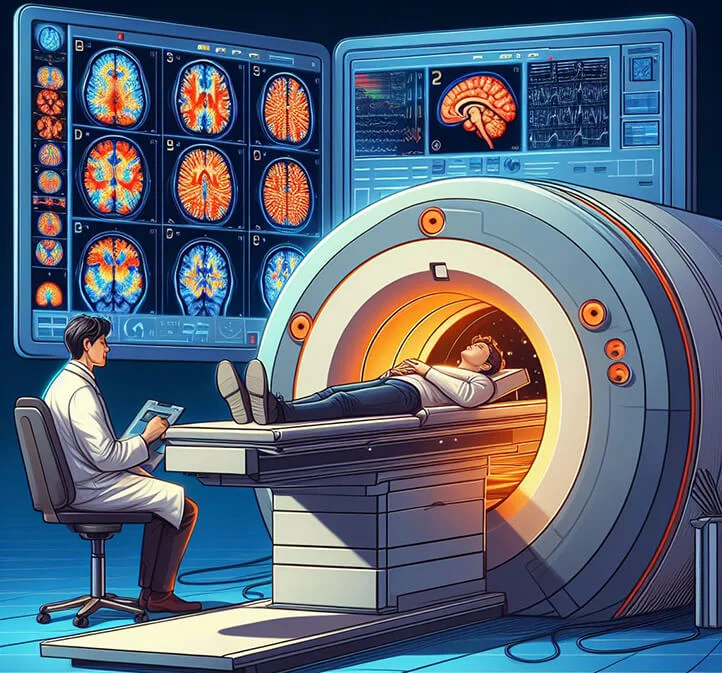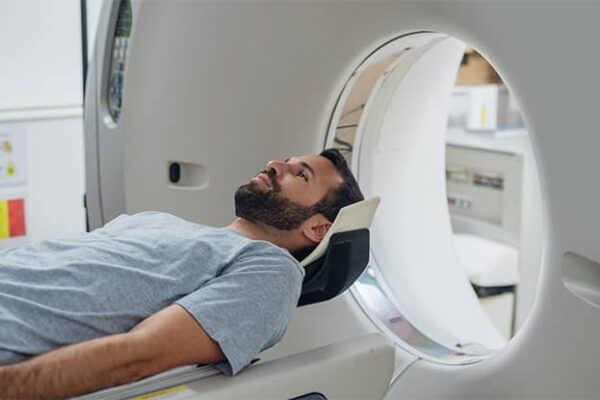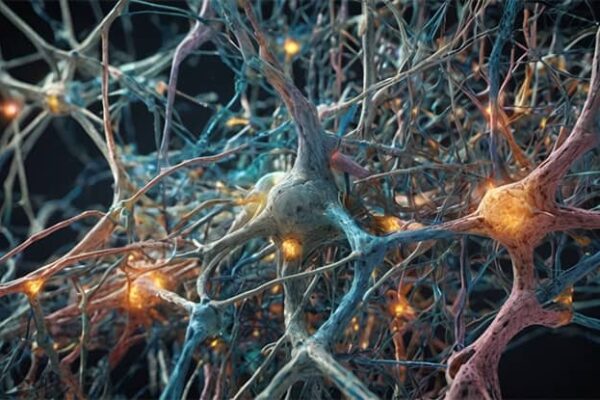Autogenic training is a psychotherapeutic method aimed at achieving deep relaxation and control over physical and mental processes in the body. It is based on self-suggestion, concentration on bodily sensations, and visualization.
Over its nearly century-long history, this method has proven to be an effective tool for reducing stress, anxiety, improving sleep quality, enhancing concentration, and building mental resilience. By mastering autogenic training skills, you can learn to regulate your heart rate, blood pressure, body temperature, and muscle tension.
The simplicity and accessibility of autogenic training have made it popular in many areas, from sports and creativity to medicine and psychotherapy. It can be used as a standalone practice or combined with other wellness and self-development methods.
The ideas underlying autogenic training originated from the work of German psychiatrist and psychotherapist Johannes Schultz in the early 20th century. Studying the phenomena of self-hypnosis and self-suggestion, he concluded that many people can enter trance-like states by concentrating on specific formulas and images.
Schultz developed a systematic method for cultivating this human ability through regular relaxation, self-suggestion, and visualization exercises. He called his approach “autogenic training.”
In the following decades, autogenic training became widespread in Europe, particularly in German-speaking countries. It quickly began to integrate into various psychotherapy programs, personal growth, and medical rehabilitation.
With the wave of mindfulness and meditation practices gaining popularity in the West during the 1960s, interest in autogenic training also grew significantly in the United States. Since then, it has remained one of the most recognized methods of psychophysiological self-regulation worldwide.

Principle and Mechanism of Action
Autogenic training is a technique that uses the power of thought and visualization to influence physiological processes in the body. Its fundamental principle is that by concentrating and forming specific mental images, one can induce changes in the autonomic nervous system, which regulates unconscious bodily functions.
The effectiveness of autogenic training is based on the close connection between consciousness, bodily sensations, and physiological processes in the human body. By intentionally regulating thoughts, concentration, and internal images in a certain way, we can directly influence many autonomic body functions.
Working with Awareness of Bodily Sensations
The foundation of autogenic training lies in developing the ability to clearly perceive and evoke various bodily sensations at will. During practice, particular attention is given to sensations such as warmth, heaviness, pulsation, and other similar phenomena.
By focusing on the perception of these sensations in different parts of the body and concentrating on corresponding self-suggestion formulas, a cascade of physiological reactions associated with them is triggered.
For example, by focusing on the image of a heavy and fully relaxed arm or leg, one can significantly reduce muscle tension in those limbs. Visualizing pleasant warmth in the forehead or chest area helps dilate blood vessels and increase blood flow to those zones.
The Role of Self-Suggestion and Visualization
Self-suggestion and mental visualization are key tools through which autogenic training exerts its effect. During exercises, a person repeats specially selected self-suggestion formulas aimed at creating desired physical sensations.
Examples of such formulas include: “My right arm is heavy and warm,” “My breathing is even and free.” The key task is to visualize the corresponding images as clearly and vividly as possible, which amplifies the effect of self-suggestion.
The degree of concentration and clarity of the visual representations largely determine the success and depth of the impact of autogenic training on the body.
Scientific Evidence and Physiological Mechanisms
Modern scientific research using functional neuroimaging methods such as fMRI and EEG confirms the involvement of certain areas of the brain in the processes occurring during autogenic training.
In particular, changes in activity have been observed in regions such as the cerebral cortex (perception of bodily sensations), the amygdala and hippocampus (emotion processing), the hypothalamus (regulation of autonomic functions), and other structures of the limbic system.
Regular practice strengthens the connections between these brain areas responsible for awareness, emotions, and control of autonomic processes, increasing a person’s ability to self-regulate psychophysiological states.
At the physiological level, performing autogenic training results in reduced activity of the sympathetic nervous system (responsible for the “fight or flight” response) and increased activity of the parasympathetic system, responsible for relaxation and recovery processes.
As a result, heart rate and breathing slow down, blood pressure drops, and stress hormone levels in the blood decrease. Simultaneously, blood flow to internal organs increases, activating the body’s defense mechanisms and resources for recovery.
Regular autogenic training leads to long-term adjustments in the autonomic balance towards the dominance of the parasympathetic nervous system. This enhances stress resilience, improves sleep quality, digestion, strengthens immunity, and slows down the aging process.

Sequence of Exercises
Mastering autogenic training is a journey where each new stage opens new horizons of self-awareness and self-regulation. The exercise program is structured as a carefully planned route, guiding the individual from basic skills to higher levels of psychophysiological control.
The classic autogenic training program consists of six main stages aimed at gradually mastering self-suggestion, visualization, and control over various bodily processes and functions.
Preparation and Creating a Suitable Environment
For effective training sessions, it is crucial to create a calm environment free from any external distractions and irritants. It is recommended to find a quiet, safe place with a comfortable temperature and soft, diffused lighting.
You can play soft instrumental music without words to create a background atmosphere. It’s advisable to turn off phones, computers, and other gadgets that could disturb you during the training.
Wear loose, non-restrictive clothing. Take a comfortable seated or lying position, using pillows or mats for added comfort. Before starting, you can perform a few cycles of diaphragmatic breathing for initial relaxation.
Muscle Relaxation
In the first stage of autogenic training, attention is focused on the awareness and sequential release of physical muscle tension in different parts of the body. Usually, one begins with the hands, then moves to the shoulders, neck, face, torso, and legs.
Accompanying formulas might sound like: “My right hand is completely relaxed and calm,” “The muscles of my face are smooth and soft.” It is important not only to mentally repeat these phrases but also to vividly imagine the corresponding images.
Achieving general physical relaxation creates a favorable background for the subsequent stages of autogenic training.
Concentration on the Sensation of Heaviness
After muscle relaxation, the skill of inducing a sensation of pleasant heaviness and fullness in the limbs and the body as a whole is practiced. Usually, one begins by focusing on the right hand with the formula “My right hand is very heavy.”
Through self-suggestion and visualization of the sensation of a heavy, “lead-filled” arm, one develops the ability to intentionally change the proprioceptive (awareness of body position in space) sensations of this limb.
Then, attention shifts to the left hand, legs, and the entire body, repeating corresponding instructions. The heaviness stage prepares for deeper overall relaxation and helps hone concentration skills.
Concentration on the Sensation of Warmth
After mastering the skill of creating a sensation of heaviness, attention shifts to evoking a pleasant warmth in different parts of the body. Formulas like “My left hand is warm” and “There is pleasant warmth in my chest area” are used.
Warmth is a sign of good circulation and relaxation, so this stage is highly beneficial for training the ability to voluntarily induce vasodilation – the expansion of blood vessels in specific body areas.
It is crucial to spend enough time concentrating and vividly visualizing corresponding images without rushing. The clearer the imagined image, the stronger the physical sensation of warmth and blood flow to the targeted area.
Regulation of Heart Rate and Breathing
At this stage, attention is directed to the awareness of the natural rhythm of the heartbeat and breathing process. Formulas such as “My heart beats calmly and steadily,” “I breathe freely and easily” are repeated.
First, the focus is on the existing rhythm of the pulse and breathing without trying to change it. Then, one can move on to visualizing a desired slower or faster rhythm and try to adjust the physiological processes accordingly.
Over time, the ability to voluntarily regulate heart rate and breathing within normal limits develops, which is valuable for maintaining deep relaxation. Understandably, one should avoid significant breath-holding to prevent oxygen deprivation.
Working with the Solar Plexus Area
In the final stage of the classic autogenic training program, attention is focused on the abdominal area and the solar plexus. The formula “There is pleasant, calming warmth in my abdomen” is typically used.
The solar plexus is an important nerve cluster that regulates many autonomic functions of the body, including the functioning of internal organs in the abdominal cavity. Through self-suggestion and visualization of sensations of warmth in this area, additional activation of the parasympathetic nervous system occurs.
This allows for the deepest relaxation, normalizes digestive processes, enhances blood flow to the internal organs, and serves as the culmination and conclusion of the full cycle of autogenic training.
Completing the Practice
After a series of exercises focused on the solar plexus, the final stage of autogenic training begins. During this stage, the individual gradually “brings” themselves out of a deep relaxed state, returning awareness to the surrounding reality.
It is recommended to sit quietly for a few minutes, concentrating on the sensations of breathing and bodily processes. Then, slowly start “expanding” the area of attention, noticing sounds, smells, and visual images around you.
It is essential not to rush and give the body enough time to naturally readjust after deep relaxation. Typical sensations after autogenic training include a pleasant freshness, energy, and vitality, accompanied by a sense of inner calm and balance.

Practical Recommendations
To fully unlock the potential of autogenic training, it’s not enough to simply know the theoretical foundations and exercise sequences. Certain practical nuances and subtleties, often overlooked by beginners, play a crucial role.
Timely elimination of common mistakes, the right approach to overcoming difficulties, and maintaining an optimal practice schedule can significantly accelerate and ease the learning process.
Where to Start?
For beginners, it is recommended to take a course in autogenic training under the guidance of an experienced instructor. This will help you master all the nuances of proper exercise techniques right from the start, greatly facilitating further independent practice.
An alternative is self-study through books, audio, or video courses on autogenic training. However, in this case, it is particularly important to follow all instructions carefully and pay close attention to details.
Before starting sessions, especially if you have chronic conditions, it is recommended to consult with your doctor. You should also familiarize yourself with potential contraindications for autogenic training.
Frequency and Duration of Training
At the initial stages, it is better to practice autogenic training 1-2 times a day for 10-15 minutes. Regularity is key, so even short but daily sessions will be more beneficial than rare, long ones.
As your skills develop, you can increase the duration of your practice to 25-30 minutes. However, do not extend the session beyond 30 minutes without the recommendation of an experienced instructor.
To maintain your skills after mastering the method, practicing 3-4 times a week for 20-30 minutes is considered optimal. Many prefer to do the exercises in the morning for a resourceful start to the day or at night for quality rest.
Overcoming Difficulties
During the process of mastering autogenic training, you may encounter certain challenges and obstacles. Here are the most common ones:
- Distracted attention, intrusive thoughts;
- Difficulty visualizing images and sensations;
- Inability to quickly relieve physical tension;
- Falling asleep during practice due to deep relaxation.
To overcome these challenges, regular practice, patience, and some additional techniques are required:
- Special exercises for concentration and attention control;
- Developing imagination through visualization of vivid, lively images;
- Combining with mindfulness breathing practices;
- Adding light physical warm-ups before training.
Accept any arising difficulties with understanding, without excessive self-criticism. The ability to deeply relax and exercise self-control comes with time and practice.
Contraindications
Autogenic training is a safe and highly effective practice for most people. However, there are certain conditions and illnesses in which its use may be undesirable or require special caution under professional supervision.
- Mental disorders: In cases of conditions like psychosis, severe depression, or personality disorders, consult your doctor before starting autogenic training. In some cases, deep relaxation might trigger an exacerbation of symptoms.
- Epilepsy: For people with epilepsy, autogenic training may increase the risk of seizures due to changes in brain activity in some areas. Therefore, it should only be used under medical supervision.
- Cardiovascular diseases: In severe cases of heart failure, angina, and other serious cardiovascular diseases, autogenic training is contraindicated due to the risk of worsening the condition. Milder forms often allow its use under medical supervision.
- Oncological diseases: In cancer cases, autogenic training can be used as an auxiliary practice to reduce stress and improve well-being but only with the agreement of the treating physician and if the disease is stable.
- Other chronic or serious illnesses: Before starting autogenic training, consult your doctor if you have any serious chronic illnesses, injuries, recent surgeries, etc.
In general, autogenic training is entirely safe for healthy individuals. However, if in doubt, be sure to seek professional approval. Remember, this method does not replace primary treatment methods—it only complements them.

Autogenic Training: Main Areas of Application
Thanks to its versatility and proven effectiveness, autogenic training is widely used in various areas of life—from sports and creativity to medicine and psychology.
Stress and Anxiety Management
One of the primary uses of autogenic training is to reduce stress, anxiety, and worry. Regular practice helps the body better resist the negative effects of stressful situations.
Through the development of deep relaxation skills and control over physiological processes, the production of key stress hormones—cortisol, adrenaline, etc.—is reduced. This helps prevent a range of unwanted psychosomatic symptoms like insomnia, headaches, digestive problems, and cardiovascular disorders.
Moreover, autogenic training strengthens self-control, concentration, and psychological resilience in stressful situations. A person learns to maintain inner calm and balance regardless of external circumstances.
Improving Sleep Quality
Many people report significant improvements in sleep quality after regular autogenic training sessions. Thanks to the development of deep relaxation abilities and control over breathing rhythm and heart rate, the body finds it much easier to enter the phase of restorative sleep.
Morning sessions allow you to start the day feeling fresh, energetic, and balanced. Daytime practices offer a quick energy recharge in situations of fatigue and stress. And evening exercises prepare the body and mind for a calm night’s rest, free from anxious thoughts.
Preparation for Important Events
The skills of attention concentration, visualization, and control over psychophysiological processes, developed during autogenic training, are extremely useful for preparing for potentially stressful situations. These can include public speaking, exams, competitions, important negotiations, and so on.
Before such events, it is recommended to conduct a short autogenic practice session to achieve deep relaxation and visualize a successful, desired outcome. This helps reduce anxiety, maintain calmness and confidence, and mobilize the body’s inner resources.
Use in Sports
In the sports field, autogenic training is used to improve athletes’ physical and psychological preparation, aid recovery after exertion, prevent injuries, and enhance performance consistency.
Athletes use this practice to manage pre-competition emotional states, focus their attention, and mentally program themselves for successful performance. Mastering the ability to control physiological reactions makes it easier to cope with anxiety and nervous excitement before critical competitions.
Moreover, regular autogenic training sessions help speed up recovery after intense physical exertion, giving athletes a significant advantage over their competitors.
Use in Creativity
People in creative professions and hobbies often turn to autogenic training to activate their creative potential. Writers, artists, musicians, and other creators note that the state of deep relaxation and concentration achieved during practice opens new sources of inspiration.
In this state, the resources of the brain’s right hemisphere, responsible for intuition, imagination, and non-standard associative connections, are activated. Simultaneously, the activity of the critical “inner censor” decreases, allowing creative ideas to flow more freely.
Regular autogenic training sessions also help uncover more subtle aspects of reality, develop inner sensitivity, and enhance mindfulness in the creative process.
Role in Auxiliary Therapy
In medical practice, autogenic training is increasingly used as an auxiliary non-drug therapy for various psychosomatic, neurological, cardiovascular, and other disorders. It enhances the effectiveness of primary treatment and improves patients’ overall well-being.
For example, in chronic pain conditions, autogenic training helps reduce the intensity of pain sensations, relieve muscle tension, and alleviate anxiety associated with the painful state. In cases of sleep disorders, it facilitates healthy night rest.
In neurological rehabilitation after strokes or traumatic brain injuries, this practice helps patients better manage movements of paralyzed limbs and bodily sensations.
In cardiovascular diseases such as hypertension, autogenic training helps lower blood pressure and normalize heart rhythm and blood flow through relaxation and vasodilation skills.
However, in the presence of serious medical conditions, be sure to consult your doctor before using autogenic training. It is not a substitute for primary treatments but rather complements them as auxiliary therapy.

Research on Effectiveness
For decades, autogenic training has been actively studied by scientists from different countries using modern neurophysiological, psychological, and medical methods. The accumulated data convincingly show its undeniable benefits for both physical and mental health.
Effects on Brain Activity
Numerous studies using functional MRI, EEG, and other neuroimaging methods have shown characteristic changes in brain activity during autogenic training.
In particular, the activity of areas related to anxiety, fear, and stress, such as the amygdala, decreases. At the same time, there is increased activity in regions responsible for bodily sensations, self-regulation, attention, and calm alertness.
Additionally, structural changes were observed in areas involved in emotion processing, bodily representation, and self-regulation (hippocampus, insula, etc.) after regular practice. This suggests long-term neuroplastic effects of autogenic training.
Effects on Physiological Indicators
Numerous studies have recorded positive changes in a range of psychophysiological parameters during and after autogenic training courses:
- Decreased heart rate and blood pressure;
- Improved respiratory function;
- Reduced levels of stress hormones (cortisol, adrenaline) in the blood;
- Improved sleep quality and speed of falling asleep;
- Enhanced recovery processes after physical/mental exertion;
- Decreased overall muscle tension.
These physiological effects indicate the activation of the parasympathetic nervous system, responsible for relaxation and recovery processes in the body.
Psychological Effects
In addition to physiological changes, researchers note several significant psychological effects from practicing autogenic training:
- Reduced levels of anxiety, depression, and stress;
- Increased stress resistance and emotional stability;
- Development of self-regulation and self-control skills;
- Improved attention concentration;
- Increased self-esteem and confidence;
- Higher life satisfaction.
Overall, scientific data convincingly demonstrate the clinically proven effectiveness of autogenic training as a psychotherapeutic method for improving psychophysical well-being.

Conclusion
Autogenic training is a true diamond in the crown of psychophysical self-regulation methods, which has accumulated ancient health traditions and the achievements of modern science. Its history counts almost a century of successful application for overcoming stress, improving the quality of life and developing internal human resources.
This practice teaches control over one’s own body and mind through conscious control of bodily sensations, breathing, heart rate and other vegetative processes. Through regular exercises in relaxation, self-hypnosis and visualization, the skills of the highest psychophysical self-control are formed.
The benefits of autogenic training have been confirmed by numerous scientific studies. It helps to reduce stress, anxiety, normalize sleep and blood pressure, and also accelerate recovery processes after exercise. In parallel, such qualities as concentration, psychological fortitude and creativity are developed.
Autogenic training offers an excellent opportunity to learn to control yourself and maintain internal balance. So why not try out its benefits on your way to a more harmonious, conscious and happier life?




